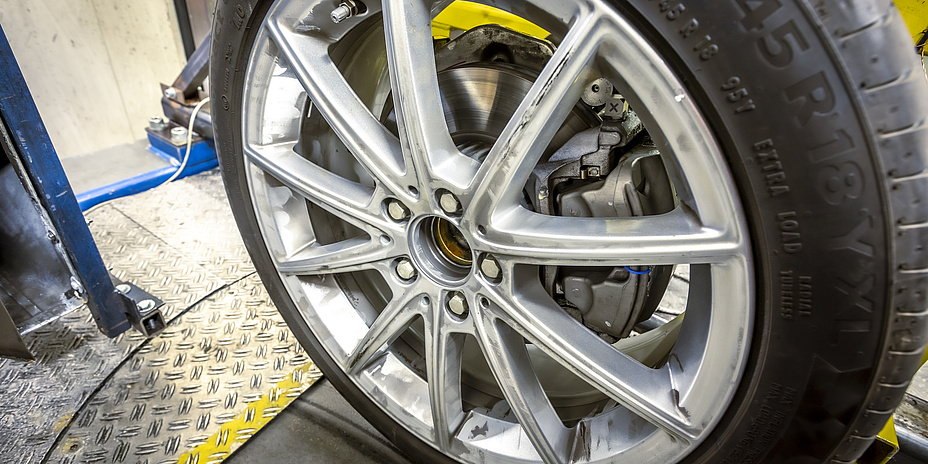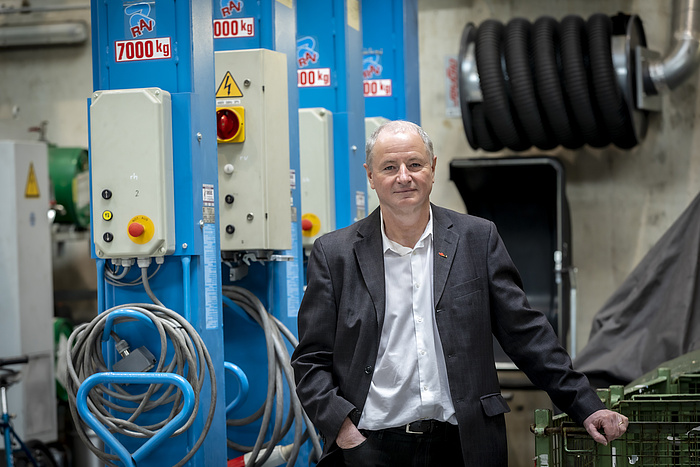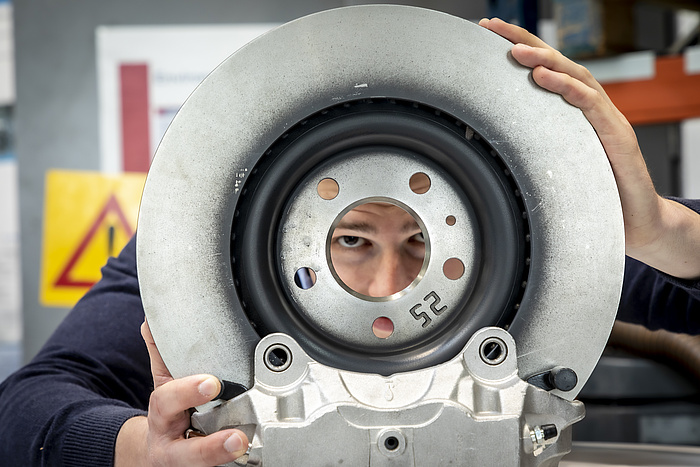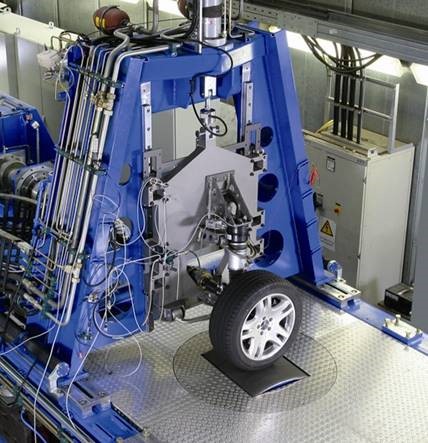Brakes as Emitters of Particulate Matter

Exhaust from exhaust pipes is becoming less and becoming cleaner, and it's no longer an issue in e-mobility anyway. So far, so reassuring. These emissions from combustion engines have been a well-known, publicly very present issue for years, for which there have been strict EU-wide guidelines since 2017/2018 with the Euro 6 emissions standard, which has led to a significant improvement. However, there are other particulate emissions from motorized traffic that are harmful to health and the environment and about which very little is known: particulate emissions from the abrasion of brake discs and brake pads.
Quantitatively ahead of exhaust emissions
Peter Fischer, head of the Institute of Automotive Engineering at TU Graz explains: "Calculated both on a per-mile basis and over the entire vehicle life cycle, this abraded mass far exceeds that of the PM that a diesel vehicle is allowed to emit through the exhaust pipe within all standards and limits. This can be estimated relatively easily using the measured loss of mass of the four brake discs and eight brake shoes with corresponding brake pads and the replacement intervals." And yet these emissions, which like the abrasion of tyres and road surfaces are classified as non-exhaust particle emissions, lead a shadowy existence – not only in the public perception, but also in research, politics and industry.

Wants to draw attention to the urgent problem of brake abrasion:
Peter Fischer from the Institute of Automotive Engineering at TU Graz.
Test cycle with values too good to be true
There is a lack of basic knowledge, a lack of measurement methods and a lack of legal regulations – still. This is because the EU intends to enshrine relevant legislation presumably between 2025 and 2027. Environmental organizations, industry and EU policy makers are already holding initial talks on this. In the framework of the Particle Measurement Programme (PMP) of the Economic Commission for Europe UNECE, work is currently being done on the recommendation for legislation, on the test procedure and test set-up (on the test bench only). Accordingly, brake PM is to be regulated on the basis of measurement data from so-called WLTP test cycles (WLTP stands for "worldwide harmonized light-duty vehicles test procedure"). However, these cycles on the chassis dynamometer are far removed from real-world driving behaviour and deliver values that are far too good overall. "Our fear is – to put it bluntly – that a driving cycle will be tinkered with in a way that doesn't match real-world driving and produces low emissions. Especially for mountainous areas, where brakes get extremely hot and other chemical reactions take place, legislation based on these facts would do little to improve the emissions situation," says Fischer.
Highly carcinogenic, highly toxic substances
So what is brake PM? And why are experts like Peter Fischer racking their brains over this? In short, because nobody really knows what's in it. There is an urgent suspicion that the particles are highly toxic. There are rough country-specific guidelines for the material composition of brake discs and brake pads. However, the detailed composition varies from manufacturer to manufacturer. "Admittedly, we know the possible starting elements. Embedded in a carbon matrix, these are, for example, barium, copper, zirconium, chromium, tin, iron or magnesium. Lead has even been found in old braking systems. So you can imagine that at high temperatures – brakes can reach up to 600 °C and literally glow – violent chemical reactions take place. Extremely small particles are created, which are hurled directly into the environment," describes Fischer.

Well-rounded? Brake discs and brake pads contain a variety of different substances, from A for antimony to Z for zinc.
Why is brake PM so dangerous?
"We fear really bad things here. For example, tiny and highly respirable copper oxide particles form from the copper components of the brake lining." There are already some studies on the health effects of traffic-based particulate matter emissions on the cardiovascular system (coronary atherosclerosis, asthma, lung cancer, etc.). Although very few studies focus explicitly on brake abrasion – because it's still difficult to measure, more on this later – it can be assumed on the basis of studies of the material compositions of various brakes that ultra-fine brake abrasion (UFP), among other things, is responsible for the health effects mentioned.
Exactly what is emitted is completely unknown
The analysis of these emissions also presents difficulties. Currently, there are only very rudimentary ways of capturing these brake particulates directly after they have been created. There is a lack of measurement methods and instruments, both in the laboratory on the test bench and even more so while driving on the road. Says Fischer: "Exhaust gases, after all, conveniently collect in the engine before going out through the exhaust pipe, where they can be accurately measured by a probe. Brake abrasion, on the other hand, is immediately transferred into the environment. In that second, it mixes with other particles, gets flung out into the environment, changes its composition or burns."
Especially during long downhill runs, on mountain passes, in urban stop-and-go traffic or in other situations in which the brakes become very hot, not only does mass abrasion occur, but also chemical reactions of the particles and dusts. To date, however, what exactly is happening here and being emitted is completely unknown. "In alpine areas especially, there will be locally more and chemically different, more critical emissions than in flat areas. Regulations on the basis of hardly relevant scenarios and with such gaps in knowledge will be next to no use at all for the alpine imission situation, nor for the environment and nor for health," stresses Peter Fischer and adds "the automotive industry will probably keep to the coming regulations, but certainly won't become active beyond that."
Back to the drawing board?
So what should be done? One possibility would be to engage with the braking system and rethink certain aspects from scratch. "We can take other coatings or use other material compositions, but of course based on accurate studies of the generation and composition of brake PM emissions." However, interfering with the extremely established braking system would have far-reaching consequences: "Brake systems have been optimized again and again for around 120 years. An immense amount of development work has gone into them. Understandably, the idea of going 'back to the drawing board' does not go down well. But it could be necessary in some areas, if we shed light on dark, unexplored corners," says Fischer. This would affect the development of measuring techniques, foundries, vehicle development and design, materials development and other industries that are quite strongly represented, especially in Austria or in the German-speaking world in general.
Addressing the problem instead of denying it
Peter Fischer wants to raise awareness of the issue and is appealing in particular to politicians to make funding available for research on the basic side. "What we have studied so far on the subject of brake particulates has been painstakingly squeezed from other funds and literally saved from under our fingernails. The big push now needs financial support and a commitment with industry to joint solutions."

Test stand for testing brakes and chassis at TU Graz.
In Graz, the conditions are ideal. At TU Graz, know-how on the subject of braking systems, test and measurement process development, and emissions has been built up over many years. And the industry is also locally accessible with several lead automotive companies – including Magna, AVL and Miba. Addressing them all, Fischer emphasizes: "It's no use closing your eyes. And brake particulates will not disappear with electric cars. Although they brake differently and basically have lower emissions, they are heavier, which in turn requires more braking power. No matter how you spin it, we can't avoid this issue. Brake particulates are real, they're dangerous, and they at last deserve to be thoroughly researched."
More detailed information on the subject of brake dust is provided by the OECD study "Non-exhaust Particulate Emissions From Road Transport".
Kontakt
Peter FISCHER
Univ.-Prof. Dipl.-Ing. Dr.techn.
TU Graz | Institute of Automotive Engineering
Phone: +43 316 873 35200
peter.fischer@tugraz.at
Michael HUBER
Dipl.-Ing.
TU Graz | Institute of Automotive Engineering
Phone: +43 316 873 35240
michael.huber@tugraz.at




